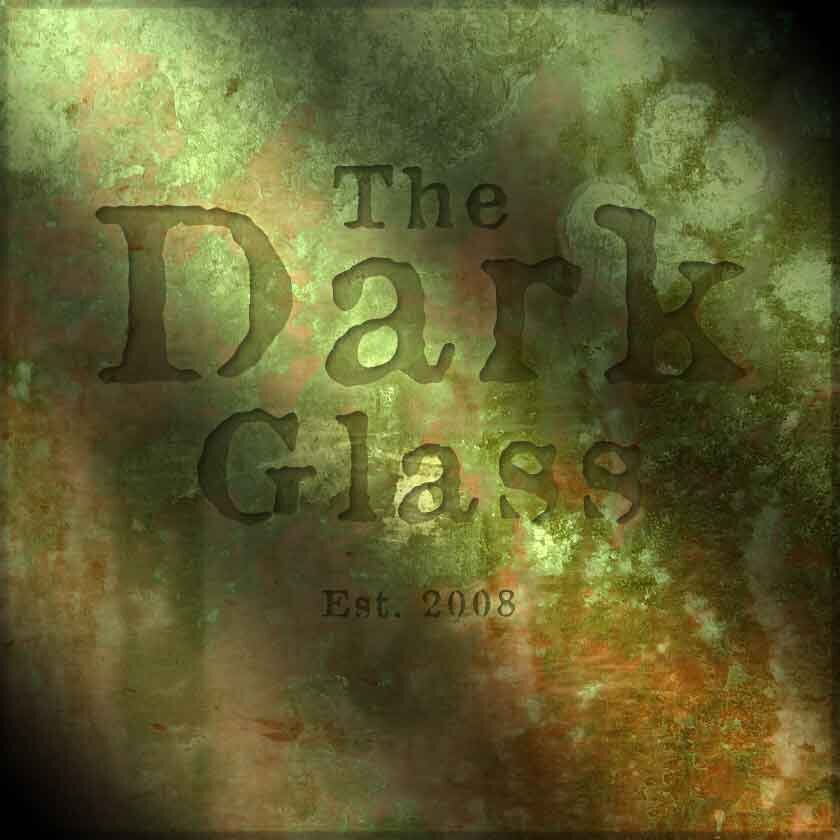Beyond the Hero's Journey: The power of story without all the baggage.
A legend about Ernest Hemingway claims that once, while lunching with friends, he bet the table ten dollars each that he could craft an entire story in six words. After the pot was established, Hemingway produced this story:
"For sale, baby shoes, never worn."
While it’s unclear if Hemingway is actually the author, if you have a background in writing, you’ve probably read it before. Maybe you’ve participated in one of the challenges this story often inspires, to create a six-word story of your own. I bring it up here, however, to ask a question.
If this is a story — as it is fairly universally accepted to be — where is the plot? Where is the beginning, middle, or end? How about characters? Rising action? Denouement? Where are all the things we traditionally think make a "story"?
To me, the answers to these questions are essential because I think understanding this six-word story is key to helping us tell better stories, regardless of where we're telling them.
Chapter 1: The Hero
Interest in storytelling today is at an all-time high, so I'm not going to make a case for the value of storytelling in general. There are many other sources available for that. (One of my favorites is the Significant Objects project.) Instead, I want to focus on how we think about stories so we can use them better.
In my experience, the way we approach storytelling today falls into two camps:
Either we talk about it so broadly so as to making it meaningless (i.e., everything is a story)
Or we’re so prescriptive about how stories work, we make them almost impossible to use.
In my experience, the best example of the latter is the Hero's Journey.
If you look for guidance about storytelling on the internet, you find tons of articles about the Hero's Journey. It is the go-to tool for storytelling. As such, you’re likely familiar with it, but just in case, here's a quick primer.
The Hero’s Journey was originally suggested by scholar Joseph Campbell in his landmark book Hero with a Thousand Faces as a common structure that was followed by many of the world's founding myths. It involves a series of common elements that act as way markers throughout a narrative.
The idea was famously adopted by George Lucas in Star Wars, but it’s a common tool for many authors and screenwriters. There's even an organization dedicated to helping screenwriters use the themes of the Hero's Journey. As content marketing has evolved as a discipline and the desire to improve storytelling in business has increased, it’s not surprising that many have turned to the Hero's Journey for help there as well.
But here's the problem. The Hero's Journey is really good at creating a very specific kind of story— big epic, mythic narratives. And sure, there are definitely times as content creators when that's useful. Certainly, when you’re writing your next fantasy bestseller, the Hero’s Journey is something to consider. And on the business side, it has it’s uses as well.
But if we stretch it too far, which is what I see often happening today, it starts to fall apart. Take a look at our six-word story again.
"For sale, baby shoes, never worn."
Could the Hero's Journey as a writing framework help us craft something like this? And perhaps more vexingly, is there a path for content creators from the Hero’s Journey to something like an advertising headline, or a CTA panel on a webpage, or an email subject line? How about microcopy in an app? Or even more relevant today, chat? Voice assistants?
These are all areas today where content creators are tasked with injecting “story,” but where the Hero’s Journey is maddeningly silent.
In this article then, I want to suggest a different way of thinking about stories that explains why the Hero's Journey works in the first place, but also gives us some ways of going beyond it to unlock the power of story in any situation.
Chapter 2: We tell stories together.
The first thing we need to do is reframe the way we think about the act of storytelling.
When we talk about storytelling today, we tend to talk about it as an objective, transactional act. In other words, we think of stories as something with clear, discrete, undisputable boundaries that we give and our audience receives. We treat them like "Here, I am giving you this ham sandwich I made." I made it. I give it to you. You receive it. And that's it. Transaction over.
It's not hard to see why we think of stories like this. We as humans really like to believe in objectivity and at least superficially, this is what happens, right? I write a story. You read it. Transaction over.
But the reality is much messier. Let's look again at the six-word story.
"For sale, baby shoes, never worn."
Read it again, soak it in, and ask yourself this: Who is actually telling this story? Hemingway? Or you?
I would argue that while Hemingway ostensibly wrote the words, you actually told the story. And I can prove it.
If I asked a group of people to write a brief description of the plot of Star Wars, I would get a bunch of pretty similar accounts. Luke Skywalker leaves home. Joins the Rebellion. Blows up the Death Star. Fans may give more detail, but the basic story will be the same.
But what would happen if I ask the same group to write a narrative version of "For sale, baby shoes, never worn?”
Certainly each version would be similar. They'd have similar moments. There'd probably be a set of grieving parents in it, but beyond that, the details will likely be pretty different. The setup, the inciting action, even the characters. All of that is provided by the reader. Or in the case of this article, by you and by your experience.
You told the story. All Hemingway did was provide something to help you focus.
The reason this particular six-word story works and others fail (and if you’ve ever followed six-word story contests, they often fail spectacularly) is that Hemingway’s story manages to focus most people who read it in the same direction. While individual narratives are likely different in the particulars, the emotional response each person feels when they tell it (i.e. read it) is very similar.
The reason this works is simple. Stories are the way we humans create meaning.
Here’s what I mean by that. When information comes into our brains through our physical senses, it has no intrinsic, objective meaning. It’s just meaningless data until it's been compared to and cataloged with our vast store of experience.
For example, if you and I were to meet, physiologically I would just a bunch of photons and sound waves being captured by your eyes and ears. It's not until those inputs are processed in the context of your previous experiences and assumptions—which are housed in your subconscious—that they are interpreted as a person speaking words that (hopefully) mean something.
Now, there is considerable evidence across wide range of disciplines—from neuroscience to psychology to linguistics to evolutionary biology—to suggest that the mechanism our brain uses to understand this meaningless data is storytelling.
In our brains, storytelling acts as a kind of taxonomy. When meaningless data comes in, we organize it into a narrative, which determines what it means, how we feel about it, and where and how this information should be stored in our experience vault.
When people say we're "wired for story," that doesn't mean we're wired to be affected by story. It means our brains tell stories to understand literally everything that happens to us. That includes when we read, watch, or listen to a story told by someone else.
(I am obviously glossing a lot here and not showing my work. Someday I will write a book, but for a good primer on the science of story, check out Jonathan Gottschall’s The Storytelling Animal. It’s the tip of the iceberg, but it’s a good, readable start.)
This all suggests a big shift in the way we should think about the act of storytelling.
We don’t tell stories to our audience. We prompt our audience to tell the story. Or in other words, we tell a story with our audience. And this is changes everything.
In the end, it doesn't matter to me what story George Lucas thought he was telling (though it clearly mattered to him). What matters to me is the story I told when I first saw Star Wars, the story I tell every time I watch it again, and way that story reinforces or challenges my experience. That's why I love Star Wars and my wife (regrettably) hates it. The story that I tell when I watch it has value in the context of my experience. The one that she tells does not.
Chapter 3: With imagination, we’ll get there.
With this in mind, we can start to find a method of thinking about storytelling that works in any situation. The first step is to understand the medium our audience will use to tell the story we we’re telling with them. Luckily, it's something you’re likely familiar with—the imagination.
You may be thinking that imagination is just something for geeky kids in the basement playing Dungeons and Dragons (like me). But if you’re thinking that, you’re wrong. In reality, the imagination is a key part of what it means to be human and is one of the central things that separates us from other animals.
Our imaginations allow us to break free from the constraints of our physical senses and experience virtually anything. And contrary to what many think, these imaginary experiences are anything but “imaginary.” They have a demonstrable, physiological effect on us. Here are three examples.
First, athletes, surgeons, and other professionals frequently and demonstrably improve their performance by simulating their actions first in their imaginations. This is a common and well-known phenomenon.
Second, is an effect called narrative transport. This is when you're reading a book and the whole world drops away as you get sucked into the story. You are not making this up. This is a real, physical effect. Multiple studies have shown that when you're in a state of narrative transport, your brain processes what's happening in the story as if it's physically happening to you. So if the character in your novel is in trouble, your heart rate increases, and so on. Again, this is a well understood phenomenon.
The third way our imagination affects us is empathy. You may have heard of a study a few years ago that showed that kids who read Harry Potter are more empathetic. The reality is, reading any fiction makes us more empathetic by allowing us to imagine lives, motives, and values that are different from our own.
So if the imagination is the medium our audience will use to tell the story we’re telling with them, the next question is how do we influence it?
We can actually find the answer in this same idea of empathy. A lot of different studies have proved the connection between reading fiction and stronger empathy, but one study suggested that stories about characters with ambiguous motives developed more empathy than others. This seems to be because these kinds of stories force the imagination to work, to consider a variety of different options. This is the key.
Our imaginations have a greater influence on us when they're active, stretched, forced to exercise. So the answer for us, the key to telling great stories, or rather inspiring our audience to tell these stories with us, is tension.
Here’s a quick analogy. Our physical senses function on principles of relationship and contrast. Our eyes, for example, work by constantly searching for the contrast and relationship between things using micro-movements called saccades. If you stop these micro-movements for long enough (say by focusing one eye on a blank wall), your vision shuts off because your brain doesn’t think there’s anything to process (again, glossing—here’s a great book that talks all about this).
We can easily think of our imaginations as an actual sixth sense, and not surprisingly, it functions in the same way. It is triggered by anomalies, by measuring relationships, searching for contrast. I’m calling this tension.
Our job as storytellers is to introduce the kind of tension that pushes our audience to imagine something new. And there are lots of ways to do that. Conflict. Metaphor. Specificity. Questions. On and on. (This deserves an article all its own.)
In fact, if you break the Hero’s Journey down, what it amounts to is a series of strategically placed tensions—conflicts, changes, and so on—that lead our imaginations on some epic adventure. (Incidentally, if you look at Pixar’s twenty-two rules, they are all just well-tested ways of creating tensions.) But the same is true of the six-word story. The contrast between "baby shoes" and "never worn" along with the question provoked by "for sale" are masterfully crafted tensions that our imaginations can't ignore.
And of course, this kind of storytelling requires empathy from us. Knowing the right combination and execution of tension to tell a story together with our audience requires an in-depth understanding of their experiences, their assumptions, their values, and so on. The reason Hemingway’ story works, for example, is a fundamental understanding of human nature. The six words are designed to play off this context, and for most audiences, they do so masterfully.
Chapter 4: Telling the real story.
The idea of imagination, tension, and context is pretty obvious in classic stories. But let’s look at a couple of examples of this in some non-narrative, business settings to see how it works. The first should be pretty familiar.
The key to the success of the Got Milk? campaign was the insight that milk was a companion food. People didn’t respond well to milk as its own product, but when you paired with a bag of Oreos or a PBJ, suddenly it was essential. So using that context, the campaign introduces a clear tension—in this case, a question. And this prompted the imaginations of millions of viewers to tell different milk-drinking stories.
A second example is from this CTA panel.
Full disclosure: This is a screenshot from a presentation deck. I definitely do not have the rights, but check out the image owners, https://www.widerfunnel.com.
I heard this example at Content Marketing World a few years ago from CEO Chris Goward from WiderFunnel. For this panel, they were interested in understanding what motivated their audience in this specific interaction. Using a brain model called the limbic map, they hypothesized a few motives and then used testing to determine that in this specific instance, their audience was motivated by a desire for sociability. With that context, they crafted this panel using a variety of tensions, including the specificity of the number, the action word “join,” the comparison of the user with other members of the community, and so on. This presumably (the panel performed significantly better in tests) prompts users to tell a story of long, late-night raids and more.
You may be thinking to yourself, “this is not storytelling. This is just clever copywriting.” But really, that’s the point. Story goes way beyond long, crafted narrative. Its power can be tapped in virtually any setting. Here’s how I think of it.
The Hero's Journey, or really any defined narrative structure, is what I call "overt storytelling." It's intended to guide its audience in a certain way, to do a lot of the heavy lifting and it tends to work well in settings where your audience is looking for a story, like customer stories, blog posts, really any long-form editorial work. And obviously novels, screenplays, and so on.
The six-word story is what I call "covert storytelling." This kind of story relies on the audience to do the heavy lifting narratively and it can be more effective in experimental fiction, poetry, and in non-narrative situations such as headlines, microcopy, and so on.
Epilogue
To close, I want to end with a word of caution. As Stan Lee, another of our time's greatest storytellers said, with great power comes great responsibility.
With this flexible and powerful method of telling stories comes an equally powerful responsibility to use it ethically. It is amazingly easy to use tension to manipulate or deceive our audience and this we must not do. Remember, the goal is to tell a story with our audience, not to trick them into telling some story we use to get them to do what we want. That means we have to be open, honest, and authentic.
There’s a lot of conversation about ethical design, so in introducing this idea I want to advocate ethical storytelling from the start.
So here it is. By understanding our audience, we can introduce the right tension that will fire our audience's imagination and allow us to tell great stories together. It sounds easy and in many ways, it is. But to do it well takes a deep understanding of the human condition and lots of practice.
After all, it took one of the greatest storytellers of the 20th century to get you to tell the story of the baby shoes that were never worn with only six words.



